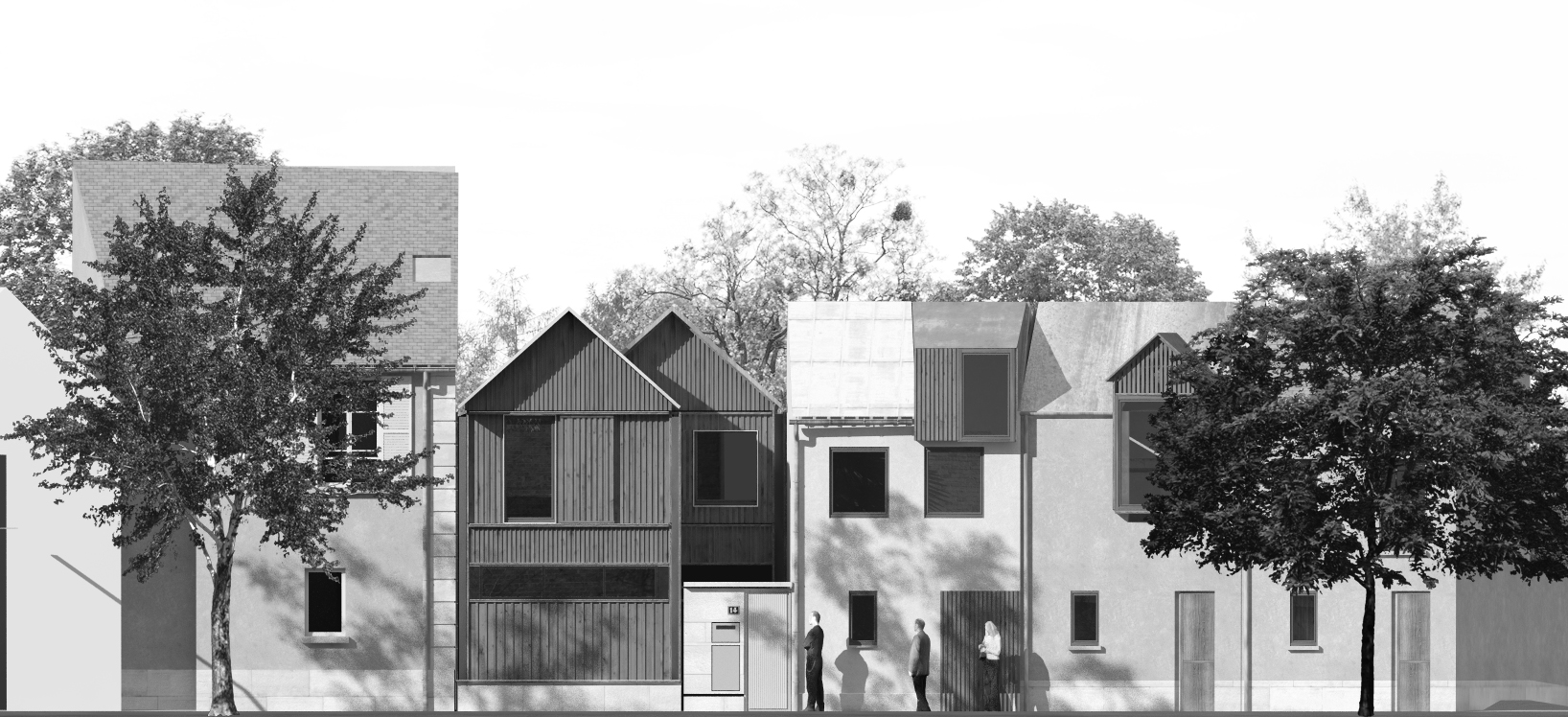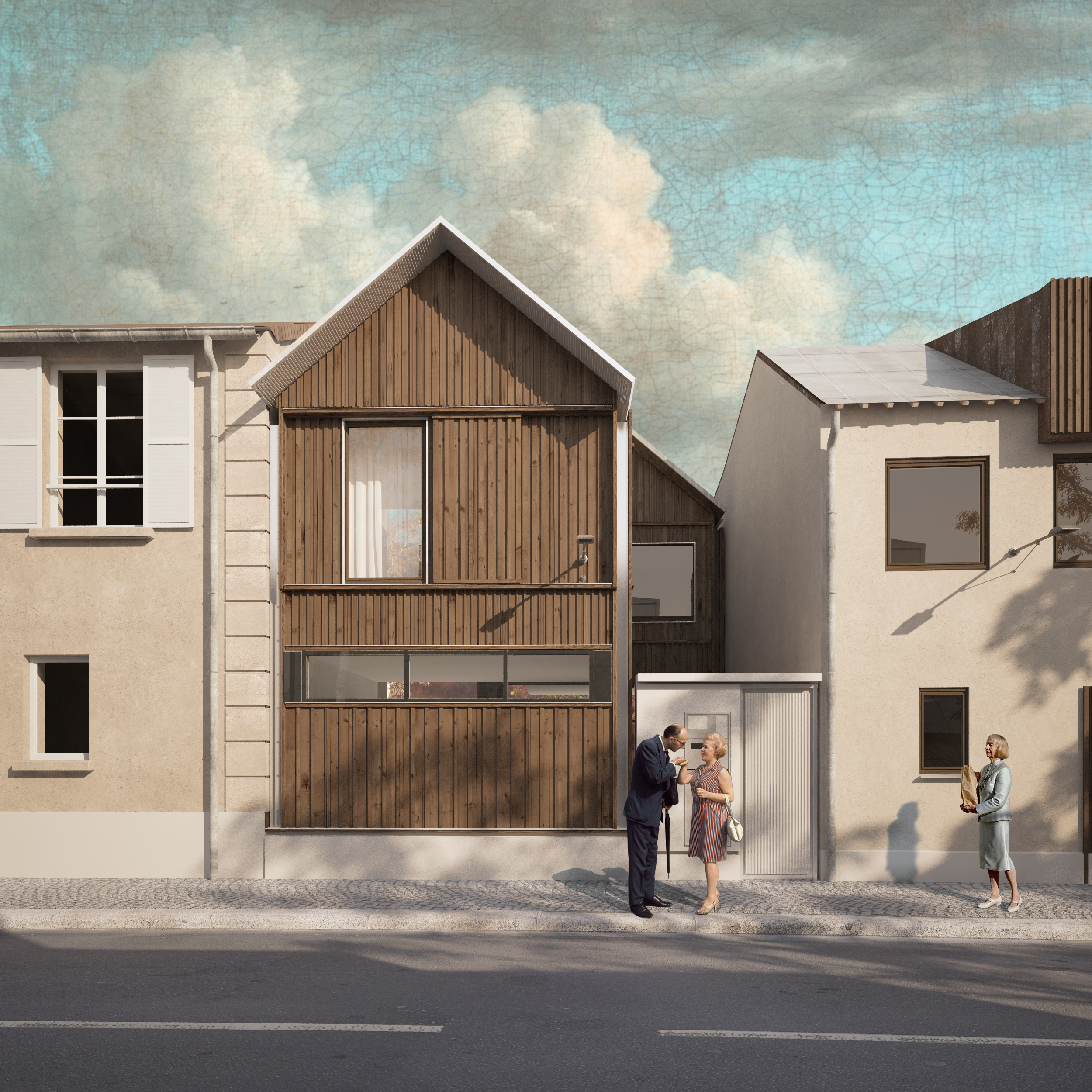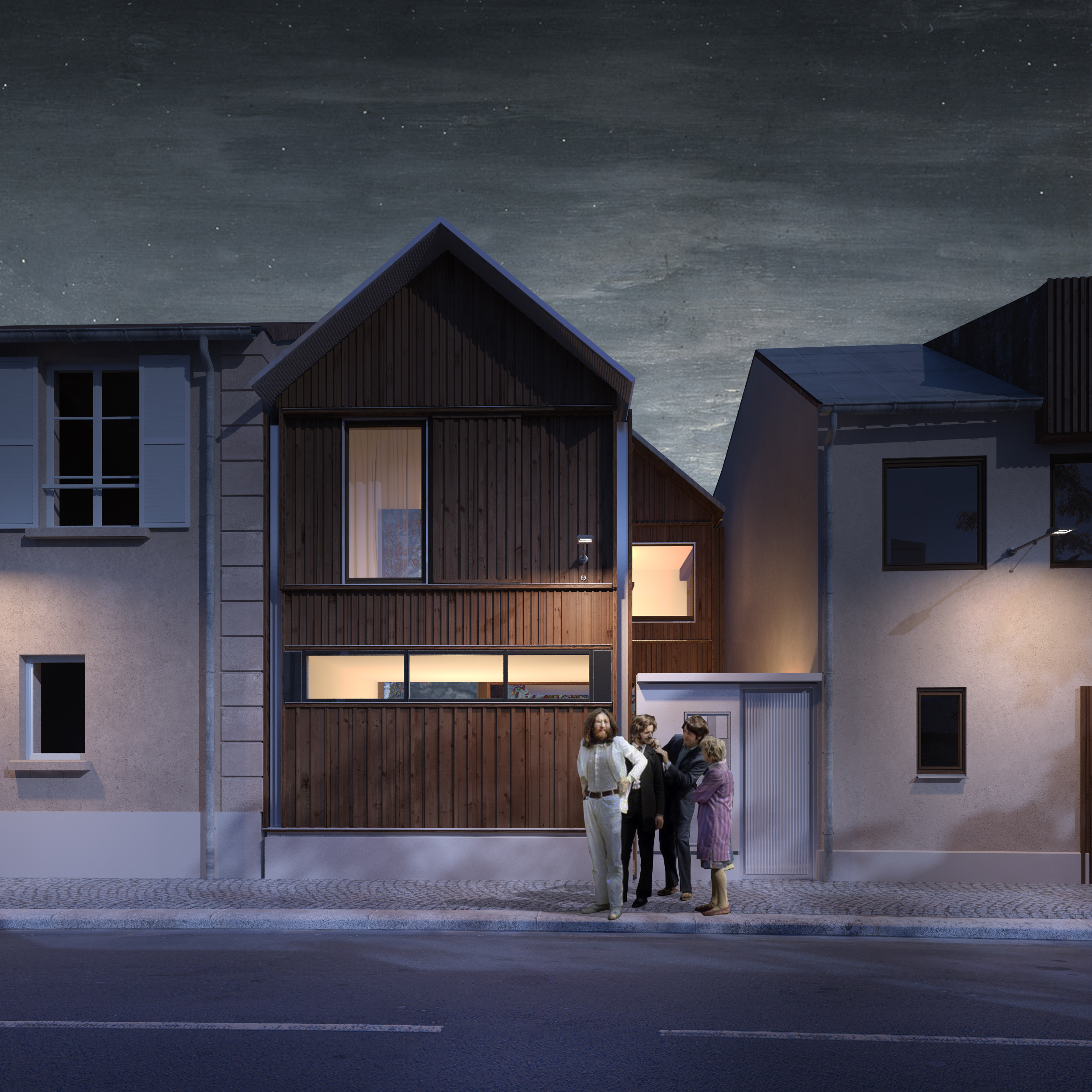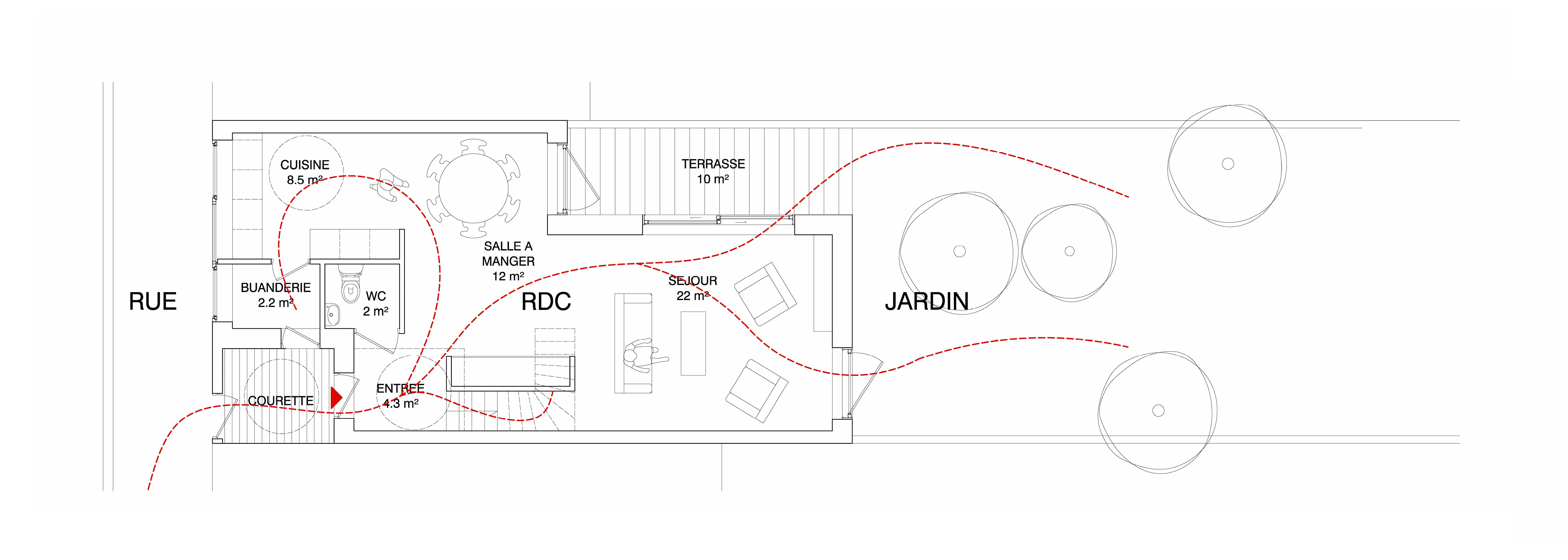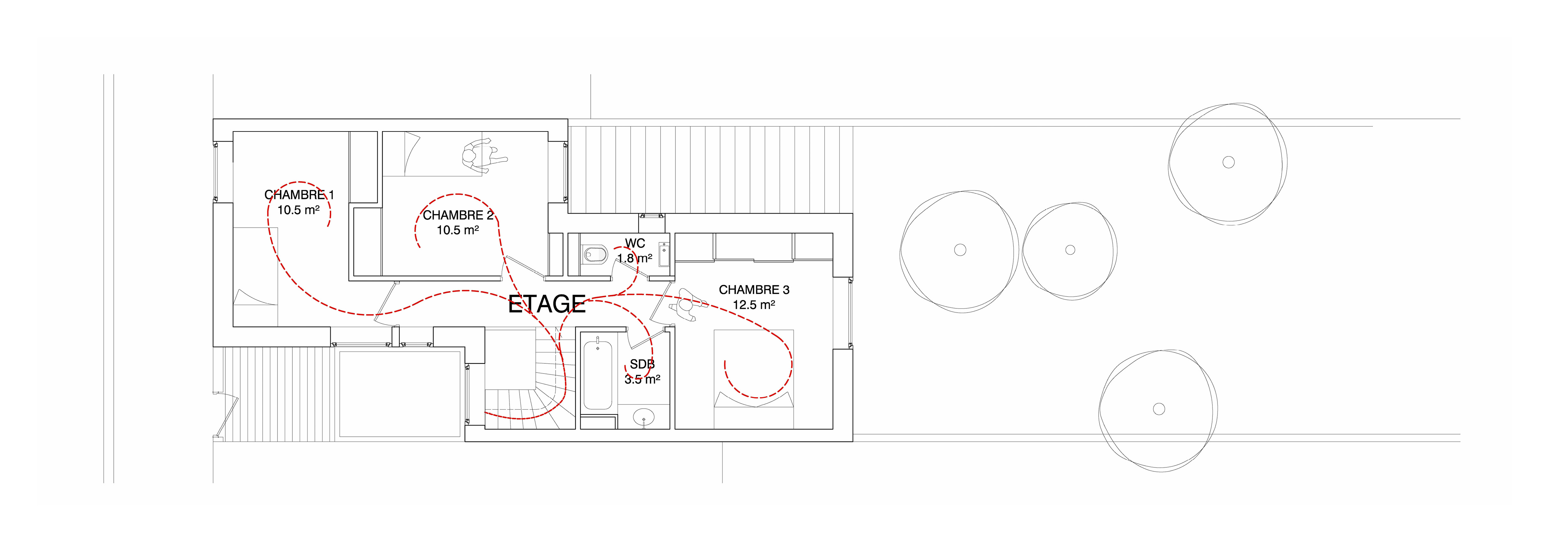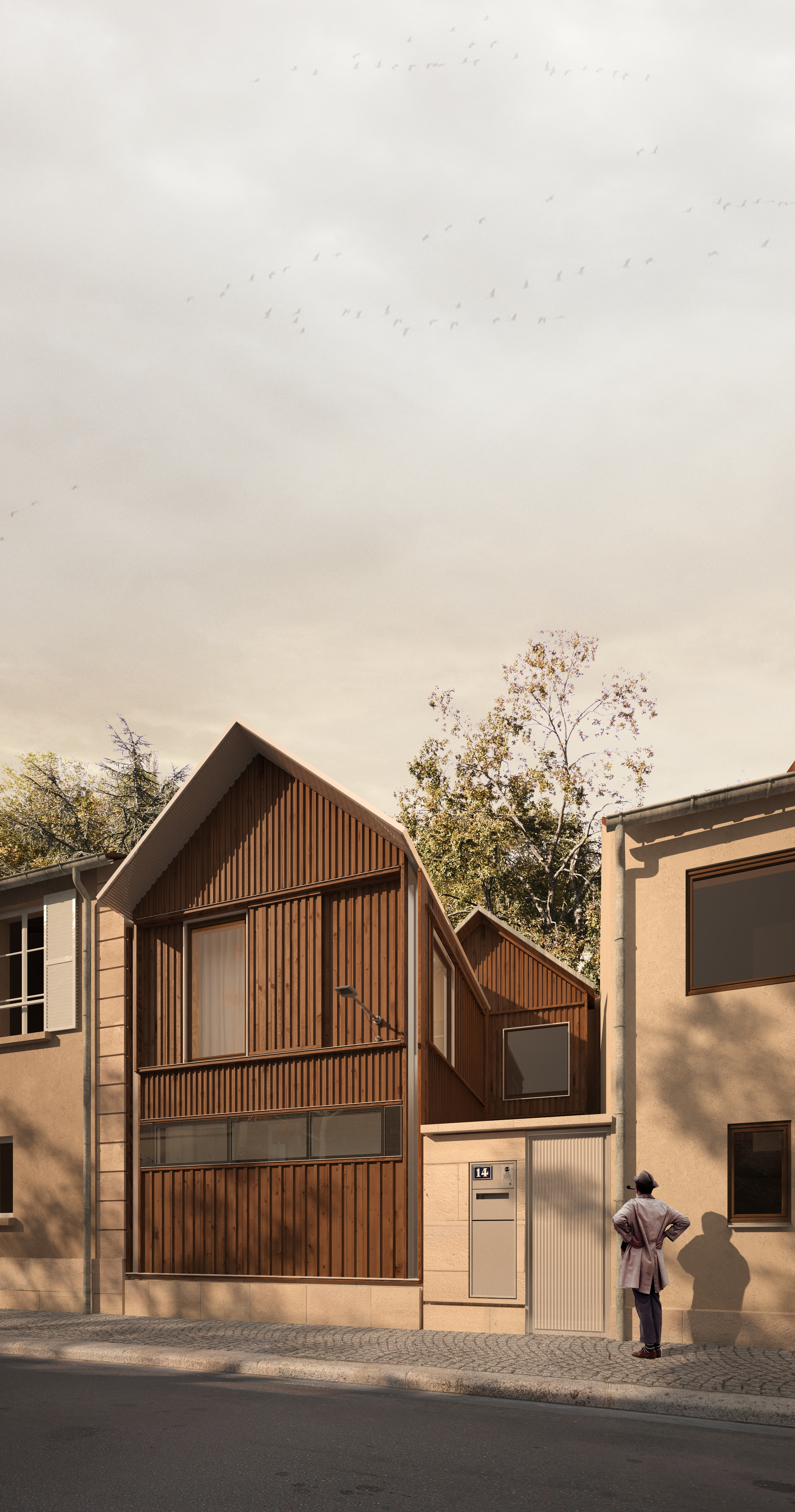
Etude de style: architecture art nouveau et patrimoine vernaculaire local. Comment inscrire la nouvelle génération d’habitat individuel à haute performance énergétique dans le temps long des formes construites? Comment conférer à cet habitat à la fois une urbanité spécifique et une présence construite reconnaissable? Quelle place ménager au bois dans cette nouvelle tectonique architecturale? Le bois a une longue histoire dans l’architecture domestique européenne. Plusieurs figures du mouvement Art Nouveau comme William Morris, Heinrich Tessenov ou Ernst Schneckenberg ont conçu des maisons individuelles qui réinterprètent la construction bois traditionnelle. Cette génération d’architectes a eu le souci d’approcher un archétype constructif d’une grande profondeur historique, tout en cultivant le caractère très domestique de ce matériau. Nous proposons de prolonger cette démarche, enrichie par le savoir-faire contemporain en matière de performance énergétique. Le recours extensif au bois pour la construction est pertinent, tant en termes de performance thermique que de consommation d’énergie grise. Cela devient optimal lorsque ce bois renouvelables. Ce matériau incarne pour le grand public l’idée de développement durable et de pratiques éco-responsables. Vivre une vie non polluante dans un environnement non pollué est devenu un nouveau rêve individuel dans lequel le bois apporte une dimension chaleureuse et réconfortante. C’est pourquoi il parait opportun, pour cette ZAC, qu’au moins une fraction des maisons de ville projetées soit en bois apparent. Mais il faut pour cela que la conception architecturale de la maison et de ses finitions répondent à deux questions: l’intégration urbaine et la pérennité. Sur ces sujets des écueils sont possibles et des préjugés doivent être surmontés. La première question a trait à l’intégration de la maison bois dans unprovient de filières locales et environnement urbain francilien. En effet, l’architecture vernaculaire briarde (et plus largement l’architecture d’Ile-de-France) qu’il s’agisse de celle des centres-bourgs ou celle des fermes isolées, est très

majoritairement une architecture enduite. Si l’on met de côté les façades médiévales à pans de bois telles qu’on les trouve à Provins (qui furent longtemps enduites avant d’être mises à nu par des restaurations modernes), il y a peu de références de construction en bois laissé visible en Ile-de-France. Beaucoup de bâtiments qui ont l’air maçonnés sont en réalité des ouvrages mixtes intégrant du bois porteur, mais celui-ci est le plus souvent noyé dans la maçonnerie. Pourtant, il existe une tradition d’architecture bois qui associe charpente et bardage bois en Ile-de-France. Beaucoup de bâtiments de ce type nous sont parvenus, mais ils sont encore aujourd’hui souvent délaissés et négligés, car associés à des programmes peu nobles, comme le hangar agricole, l’appentis, la petite fabrique rurale, le lavoir etc. Ces ouvrages utilitaires sont discrets et pourtant ils sont partout, tant dans les bourgs que dans les fermes, et dans toute France. Ils ont cette présence familière qu’il faut rechercher pour acclimater l’architecture bois au contexte francilien, tout en évitant l’effet « chalet suisse » de catalogue. La seconde question a trait à la durabilité du matériau bois. Les murs de maçonnerie sont associés à l’idée d’une grande pérennité, d’une plus grande solidité (cf. le conte Les trois petits cochons) que les murs de bois. Il est donc crucial que les détails d’architecture traitent en priorité les points faibles – ou réputés tels – de l’enveloppe bois. | This project is a study of style: The art nouveau architecture and the local vernacular heritage. How could we create a new generation of houses with high energy performance that would also be a long lasting construction? How could we make the house urban with a recognizable built presence? What place would wood have in this new architectural tectonic? In Europe, there is a long history with wood as a building material in domestic architecture. Several figures of the Art Nouveau movement, such as William Morris, Heinrich Tessenov and Ernst Schneckenberg have designed individual houses which reinterpret traditional wood construction. This generation of architects carefully approached a constructive archetype of great historical depth, while cultivating the very domestic character of the material.

We are inspired by this approach, enriching the project with the contemporary know how in terms of energy performance. Extensive use of wood in the construction is beneficial, both in terms of thermal performance and embodied energy consumption. This is optimal when the wood comes from local and renewable sources. The material, embodies the idea of sustainability and eco-responsible practices. The new dream is to live a non-polluting life in a non-polluted environment, to which wood offers a dimension of warmth and comfort. Therefore, it seems appropriate, for this ZAC, that at least a fraction of the planned townhouses should be constructed in exposed wood. This requires the architectural design and finish of the house to respond to both the urban integration and sustainability. On these two subjects there are prejudices which must be overcome. First there is the question of the integration of a wooden house in the urban Ile-de-France region. The vernacular architecture of Briard (and more broadly, the architecture of Ile-de-France) whether it is of the city center or isolated farms, is truly coated architecture for the most part. If we set aside the medieval half-timbered facades which can be found in the Province (which were plastered for a long time before they were exposed to modern restorations), there are a few references to wooden construction left visible in Ile-de-France. Many of the buildings that appear to be masonry are in fact mixed structures, which incorporate load-bearing wood, this is most often imbedded in the masonry. However, there is a tradition of architecture which combines wood framing and cladding in the region. Buildings of this type have been more appreciated lately, but are often still neglected today, because they are associated with less noble programs, such as the agricultural shed, the small industrial factory, the washhouse etc. These utilitarian works are discreet and yet they are everywhere, both in towns and on farms throughout France. They have the familiar presence that must be sought to incorporate wooden architecture to the Ile-de-France context, while avoiding the “Swiss chalet” effect. The second question relates to the durability of the wood material. Masonry walls are associated with the idea of greater durability and solidity (Ex. The tale of The Three Little Pigs) than wooden walls. Therefore it is crucial that the architectural detailing is in the weak structural points of the wooden house.

